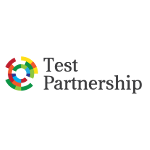This is particularly true when recruiting senior hires, where many organisations simply wouldn’t dream of making an offer to a candidate without first completing their preferred personality questionnaire. Personality questionnaires are increasingly used in emerging talent and early-stage career selection, often alongside a battery of ability tests. Whichever way they are used, these organisations agree that personality questionnaires offer tremendous value, revealing vital information about a candidate’s temperament, values, behaviours, and work-styles.
However, to the uninitiated, adopting personality questionnaires for the first time can seem daunting, putting off many HR professionals. In this article, we outline three evidence-based strategies for incorporating personality questionnaires into your recruitment processes.
1. Screen Using Universal Predictors
Perhaps the simplest approach to using personality questionnaires is to screen candidates using personality traits which are ubiquitously predictive of performance. For example, in the Big Five model of personality, the trait of conscientiousness is associated with job performance in virtually all roles (Hurtz & Donovan, 2000). This is because conscientious employees are more organised, hard-working, and focused than lower-scoring employees. This manifests as an advantage in all fields of work. Similarly, the core-self evaluations (CSE) traits are also predictive of performance in a wide range of roles (Bono & Judge, 2003). This is because the CSE underpins a person’s resilience, helping them to perform better under stress. To simplify the process, one could just hire candidates based on their scores on these universal predictors, regardless of the role or external context.
Although straightforward, this approach does have drawbacks. Firstly, this approach can seem rather reductive, and doesn’t allow organisations to screen based on the traits they feel are important to their role. Secondly, many predictors of performance tend to be role-specific, and would thus be left out using this approach. Finally, this approach may be easily gamed by applicants, who could theoretically try to “fake” their results, which is easier to accomplish when only looking at a handful of traits. Nevertheless, one should always consider the academic research, and pay particular attention to the traits which are ubiquitously predictive of performance in the workplace.
2. Screen For Person-Job Fit
An alternative approach would be to consider the underlying characteristics required for each role, and then select candidates according to those characteristics. For example, research suggests that certain extraverted types (for example ESFJ using the Myers Briggs Type Indicator® notation), tend to perform better in sales roles than less extraverted candidates. Similarly, in roles with significant emotional labour and caring requirements, emotional intelligence tends to predict workplace performance (Beydler, 2017). As a result, selecting candidates specifically for person-role fit is an effective strategy for identifying likely top performers across a wide range of possible roles.
This approach also has drawbacks however, as it requires significantly more preparation than simply using universal predictors. HR professionals will need to conduct a thorough job analysis of each role, allowing them to identify the specific predictors of performance for each role. In larger organisations, this could require significant time and resources, especially in the beginning. However, if organisations are willing to invest the time and effort required, this approach represents a highly effective method of screening candidates, maximizing person-job fit.
3. Screen for Organisational Culture Fit
The third option is to screen candidates based on organisation-to-person fit. It’s no secret that congruence with the organisational culture is important for employee engagement and job satisfaction. Increasingly, organisational cultures are becoming tangible and communicable, with many organisations listing their values openly to potential applicants. Many of the more malleable personality questionnaires can be customised in line with an organisation’s cultural framework and values, making them ideal selection tools to maximise organisation-to-person fit.
Although this approach will be ideal for maximising organisational commitment, employee engagement, and job satisfaction, it may be less effective at predicting actual performance. Naturally, we have all met individuals who love working for their organisation, but unfortunately experience serious capability issues nonetheless. As a result, adherence to organisational culture should certainly be considered, but shouldn’t comprise 100% of the selection decision.
Conclusion
Of all the major employee selection tools available today, personality questionnaires are by far the most versatile. They measure a broad range of traits, types, and other behavioural indicators which underpin performance at work, exceeding the breadth of any other major selection tool. Moreover, they measure certain traits which are largely inaccessible via traditional interviews, which largely just focus on interpersonal skills. However, organisations must be mindful of how they incorporate personality questionnaires into their decision-making, and consider a wide range of information sources before screening candidates based on scores. When done correctly, personality questionnaires rank among the most effective tools on the market, and are worthy additions to any employee selection process.
Test Partnership offer personality questionnaires you can easily customise for each role. Feel free to discuss with one of their business psychologists how personality questionnaires can improve your quality of hire.







